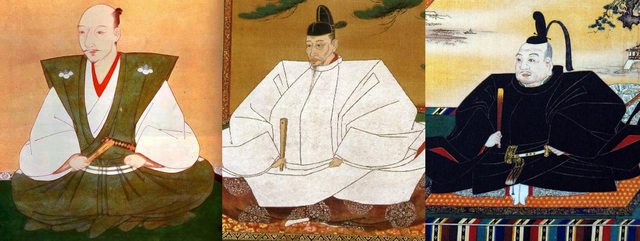Feb 01, 2018
Soldiering on at The Battlefields of Nagakute
Visit the grounds of one of Japan’s most historic battles.
When considering Japanese history, most people will think of two key places: Kyoto and Tokyo. The former was for long the country’s capital, is steeped in tradition, and was home to the Imperial family; while the latter – in the guise of Edo – became the capital city during the country’s most formative cultural period, the Tokugawa era.
However, Aichi tends not to spring to many people’s minds, and this is a great shame, because during the Sengoku period, when the nation’s samurai warlords spent much of their time battling each other for supremacy, much of these machinations went on in this very region.
Perhaps one reason for this is that while the likes of Tokyo and Kyoto have managed to safeguard their historical heritage, Aichi seems to have let its own slip away in favor of modernization and manufacturing.
Fortunately, in Nagakute, a half hour’s drive from the center of Nagoya, the locals are doing their best to preserve and remember one of the most noteworthy battles of the Sengoku period: the Battle of Komaki and Nagakute.
A background to the battle
In 1584, two years after the death of the first great unifier and de facto leader of Japan, Oda Nobunaga, the leading samurai daimyo chiefs were still jostling for position to succeed Oda’s mantle. The primary candidates were Nobunaga’s loyal chief, Toyotomi Hideyoshi with 40,000 men in his command, and his second son, Oda Nobukatsu, who along with his ally, the feared warlord Tokugawa Ieyasu, had a combined 18,000 troops.

The three unifiers of Japan, Oda Nobunaga, Toyotomi Hideyoshi and Tokugawa Ieyasu. All three were born, lived and fought in the Aichi area.
The two armies stood at Komaki in the shadow of the castle ready for battle for some time before members of Toyotomi’s troops discovered that Tokugawa’s base at Okazaki Castle was under-protected. Certain of their numerical advantage, Toyotomi instructed his troops south Okazaki, making sporadic raids on Tokugawa held castles along the way. However, at Iwasaki (modern day Nisshin), they were pushed back by the Tokugawa armies to Nagakute, and it was there that the bloodshed began in earnest.
The battle fought was a bitter one with many soldiers and samurai commanders losing their lives. By the battle’s end, at which time Tokugawa had pulled back to the safety of Kiyosu Castle, the Toyotomi had lost many of their generals, forcing them to return to Osaka Castle. Despite the heavy Toyotomi losses – perhaps keenest felt amongst them being the famed general Ikeda Tsuneoki – with neither army able to claim victory the battle is considered by history to be something of a stalemate. However, the Toyotomi strength in numbers was apparent, and in the years that followed, after offering peace and security over his dominion to Nobukatsu, Toyotomi continued his rise to the top and succeeded Oda Nobunaga as ruler over Japan until his death in 1598.
As for Tokugawa, his time was still to come.
Visiting the battleground
More than just a skirmish in a time of skirmishes, the Battle of Komaki and Nagakute was not only instrumental in cementing the rise of Toyotomi Hideyoshi, but it is also the only battleground at which any of the great unifiers of Japan faced each other in battle, making its well preserved grounds a must see for anyone interested in samurai history.
The site of the fiercest fighting is now Kosenjo Park, and features the Nagakute Historical Museum, dedicated to the monumental battle. Although the museum has little English language signage, the area’s surrounding historical sites have more, making it more informative and easier to navigate.
These sites include head mounds (thankfully long buried), a monument at the point where Ikeda was beheaded, and points marking where various generals were camped. The most interesting of these is perhaps in Iroganeyama Historical Park where a monument to mark out where Ieyasu set up his camp still stands. If you can use your imagination you can see where he would have laid out his tiger skins on the rocks from where he would have commanded his troops. And if you look closely, with the right sort of eyes, you may just see the samurai ghosts still wandering the blood soaked hills, searching for their long gone remains.
Getting to the battleground.
Nagakute Kosenjo Station is the closest to the Nagakute Historical Museum. Take the Higashiyama subway line to its end at Fujigaoka, and then change to the Linimo monorail line. For those short on time it is advisable to drive around the battle’s main points, but if you have a bit of free time, it can take most of the day to idly wander around, and really soak up the atmosphere.
- Where: Nagakute Historical Museum, 204 Musashizuka, Nagakute-cho (map)
- Contact: 0561-62-6230
By Mark Guthrie
Image by Bariston (Own work) [CC BY-SA 4.0], via wikipedia.com (modified)
Image composite via timetoast.com (modified)
Image by Hideki Yoshida (Own work) [CC BY-SA 2.0], via flickr.com (modified)




About the author